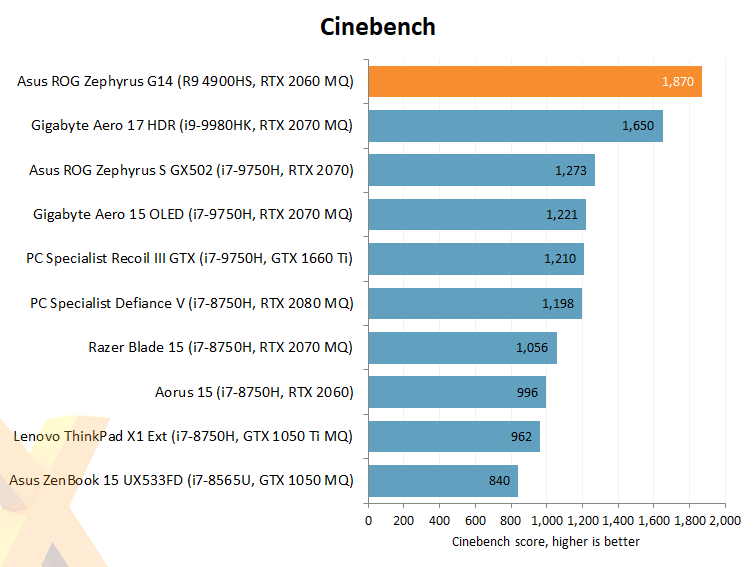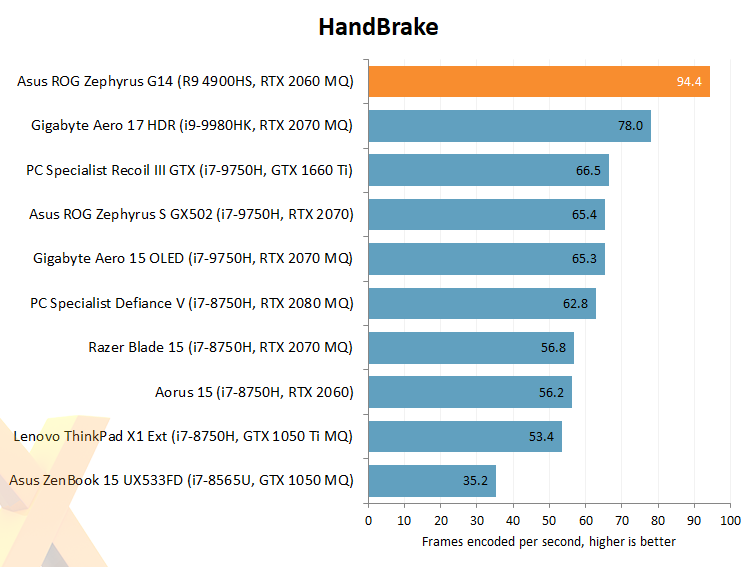Benchmarks: CPU

Every other laptop in this line-up uses an Intel chip, and all but one employs the performance H-series which is considered the immediate rival to AMD's own H(S) processors.
We've been running PiFast since 2002. Its less-than-optimised code remains a good proxy for performance in older applications. AMD has made decent strides in this area with successive Zen architectures, but it remains 10-20 percent slower here.

The Intel Core i9-9980HK set new records in multi-threaded performance, befitting a £3,499 laptop like the Gigabyte Aero 17 HDR. AMD comes armed to the 8C16T mobile party with more ammunition, besting Intel's finest in a 14in gaming laptop weighing just 1.6kg. Impresssive.
And the Cinebench R20 score is even more impressive, where the Zephyrus is 30 percent faster. Putting these scores into perspective requires comparison against desktop chips, not mobile, and our own testing shows the R9 4900HS to be quicker than a desktop R7 2700X released a couple of years' ago - and that was certainly no slouch.
Premium desktop-like performance in a thin-and-light gaming laptop? Yup.

The Zephyrus G14 is also able to go longer at higher frequencies than most of the competition, leading to another stonking result in the HandBrake encoding test. AMD effectively marshals its multi-core goodness from desktop to mobile.
All that said, every laptop chip throttles at some point, and the G14's drops from an all-core 3.62GHz to a steady-state 3.17GHz after approximately three minutes of full-on load. The upshot is that the Cinebench R15 score drops to a consistent 1,580 on subsequent back-to-back runs while HandBrake slows down to 79.3fps.









